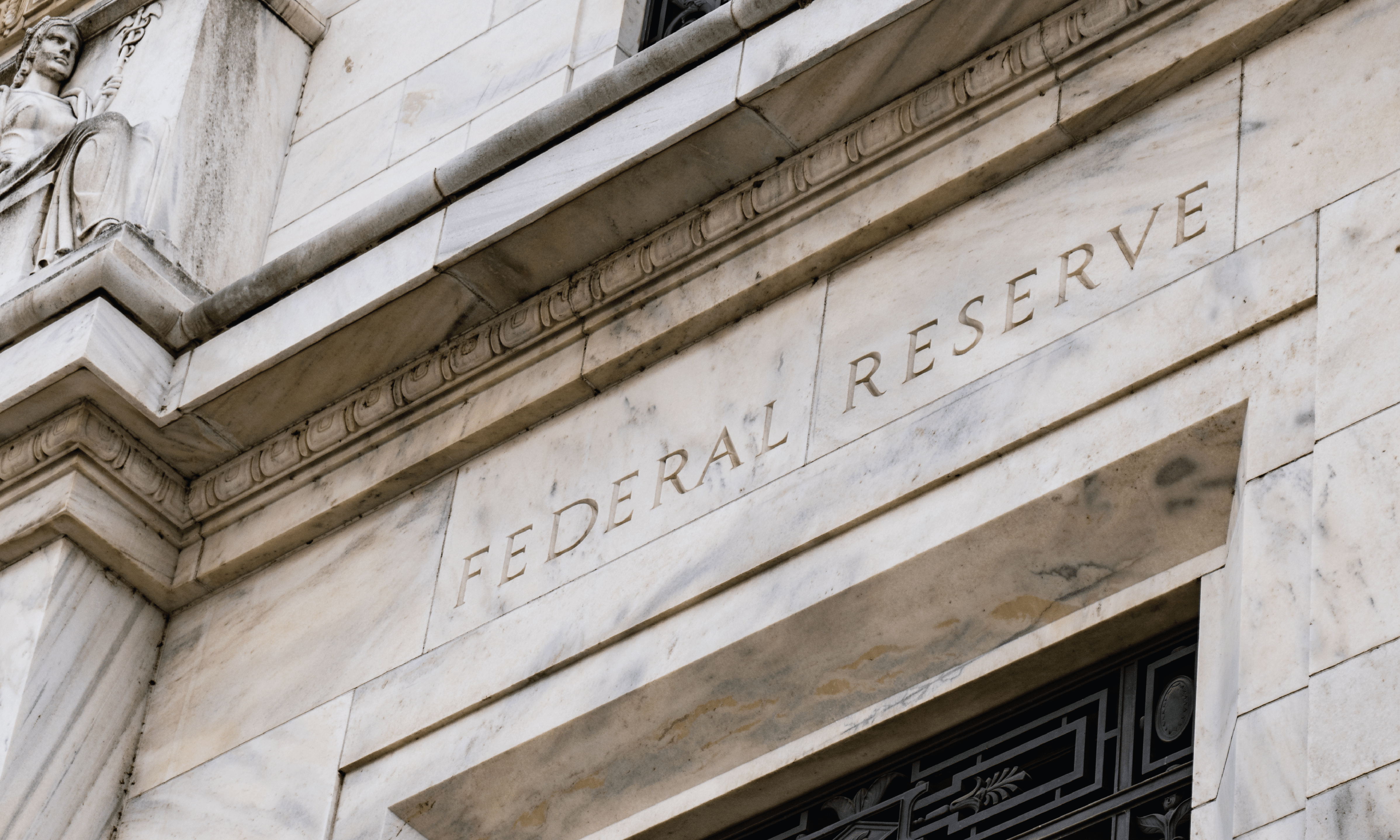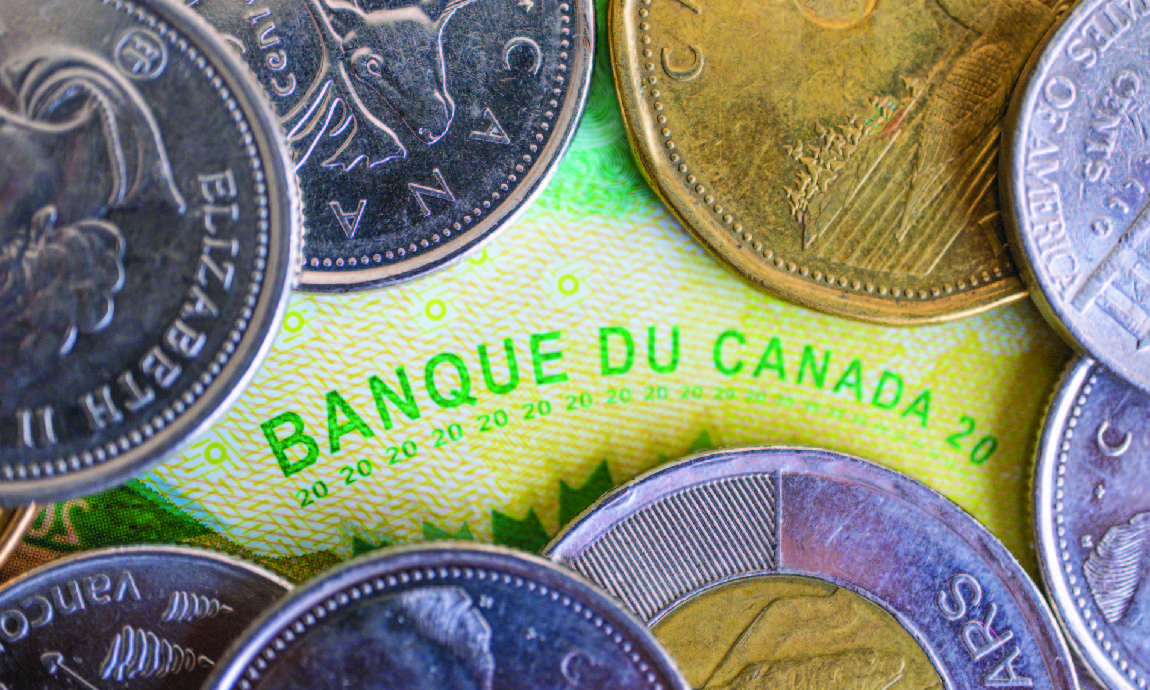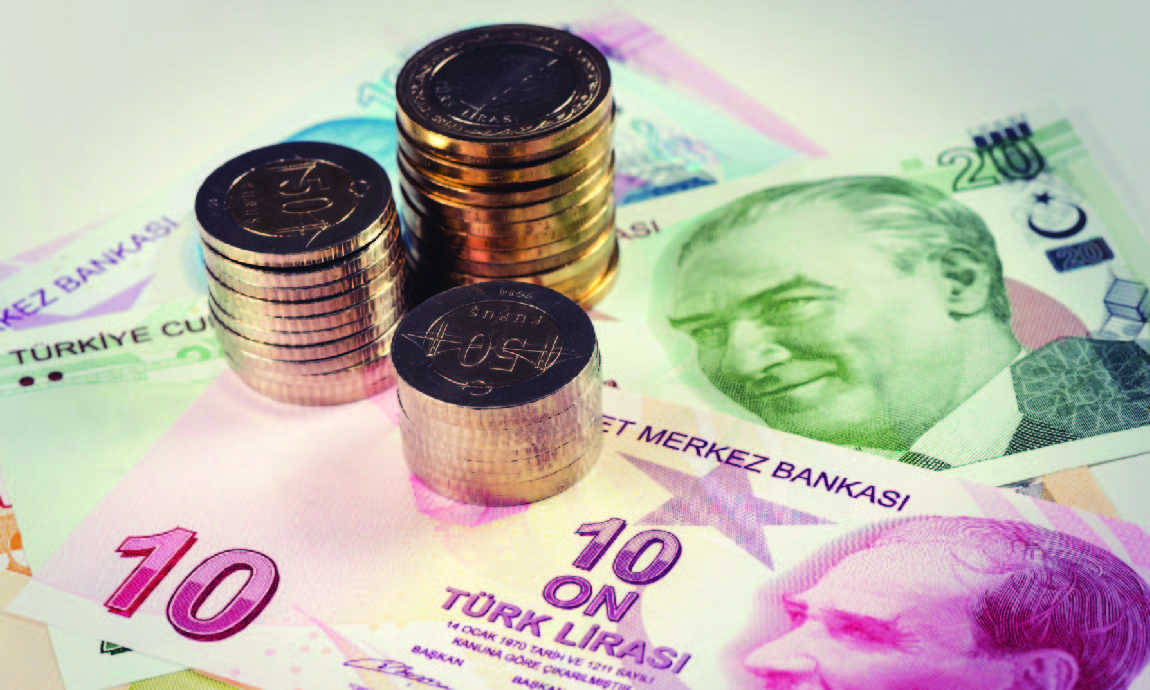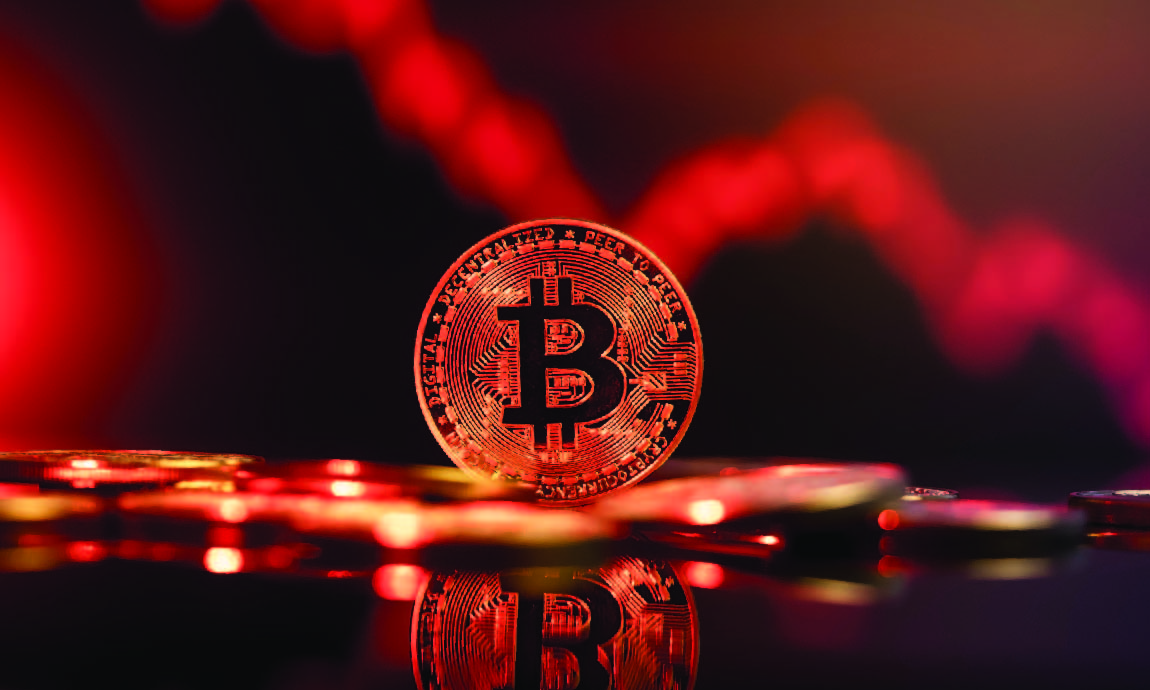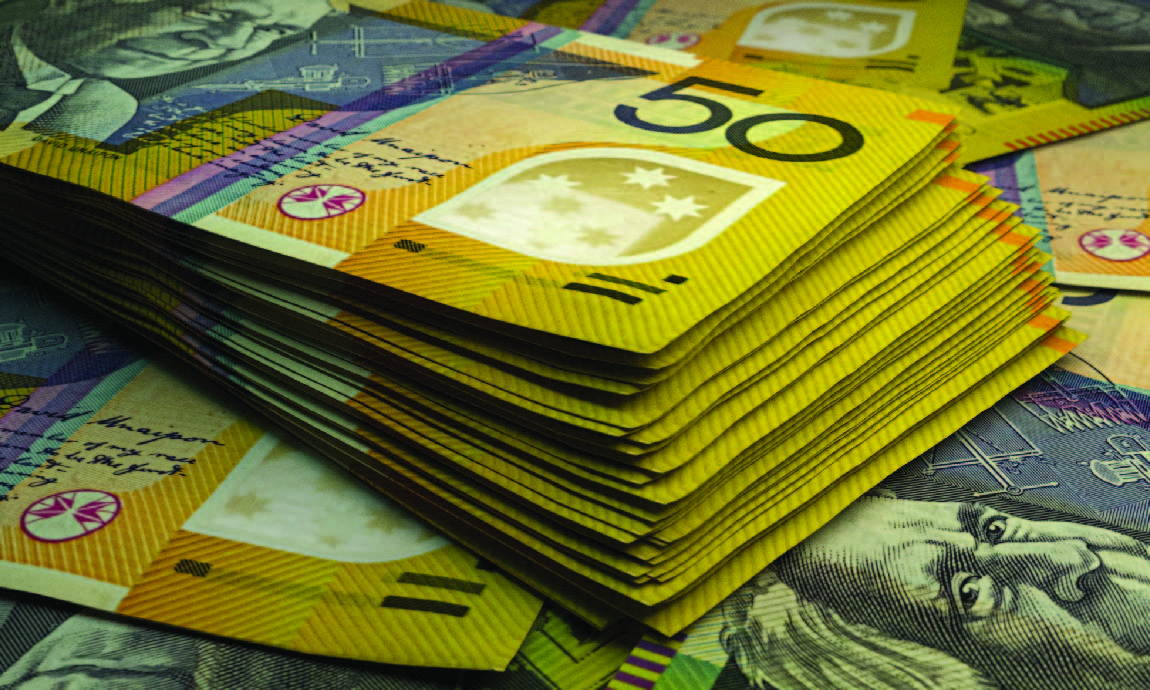Worsening economic conditions, higher borrowing costs, and a stronger dollar weigh on the industrial and construction activity, weakening the crude oil demand growth outlook, and adding selling pressure on the prices of both Brent and WTI to hit yearly lows of $68-$73 per barrel range.
The higher interest rates ahead and surging bond yields are negative catalysts for the non-yielding precious metals, with Gold touching six-month lows of $1,930/oz, while Silver fell over 2% to $23,30/oz.
Worsening economic conditions, higher borrowing costs, and a stronger dollar weigh on the industrial and construction activity, weakening the crude oil demand growth outlook, and adding selling pressure on the prices of both Brent and WTI to hit yearly lows of $68-$73 per barrel range.
The prospect of rising U.S. interest rates bodes well for the U.S. dollar and bond yields, with the DXY-U.S. dollar index rebounding off monthly lows to over 103 marks while the yields on the 2-year and 10-year U.S. Treasuries climbed to three-month highs of 4.75% and 3.85% respectively.
The higher interest rates ahead and surging bond yields are negative catalysts for the non-yielding precious metals, with Gold touching six-month lows of $1,930/oz, while Silver fell over 2% to $23,30/oz.
Worsening economic conditions, higher borrowing costs, and a stronger dollar weigh on the industrial and construction activity, weakening the crude oil demand growth outlook, and adding selling pressure on the prices of both Brent and WTI to hit yearly lows of $68-$73 per barrel range.
The prospect of rising U.S. interest rates bodes well for the U.S. dollar and bond yields, with the DXY-U.S. dollar index rebounding off monthly lows to over 103 marks while the yields on the 2-year and 10-year U.S. Treasuries climbed to three-month highs of 4.75% and 3.85% respectively.
The higher interest rates ahead and surging bond yields are negative catalysts for the non-yielding precious metals, with Gold touching six-month lows of $1,930/oz, while Silver fell over 2% to $23,30/oz.
Worsening economic conditions, higher borrowing costs, and a stronger dollar weigh on the industrial and construction activity, weakening the crude oil demand growth outlook, and adding selling pressure on the prices of both Brent and WTI to hit yearly lows of $68-$73 per barrel range.
Despite some early signs that the worst of the inflation pressures are over by having the smallest annual increase in headline inflation in more than two years, the Core Inflation rate (which excludes volatile energy and food prices) still holds resilient to 5.3% in May, making Fed’s officials remain hawkish on their monetary policy outlook until the end of 2023.
The prospect of rising U.S. interest rates bodes well for the U.S. dollar and bond yields, with the DXY-U.S. dollar index rebounding off monthly lows to over 103 marks while the yields on the 2-year and 10-year U.S. Treasuries climbed to three-month highs of 4.75% and 3.85% respectively.
The higher interest rates ahead and surging bond yields are negative catalysts for the non-yielding precious metals, with Gold touching six-month lows of $1,930/oz, while Silver fell over 2% to $23,30/oz.
Worsening economic conditions, higher borrowing costs, and a stronger dollar weigh on the industrial and construction activity, weakening the crude oil demand growth outlook, and adding selling pressure on the prices of both Brent and WTI to hit yearly lows of $68-$73 per barrel range.
Despite some early signs that the worst of the inflation pressures are over by having the smallest annual increase in headline inflation in more than two years, the Core Inflation rate (which excludes volatile energy and food prices) still holds resilient to 5.3% in May, making Fed’s officials remain hawkish on their monetary policy outlook until the end of 2023.
The prospect of rising U.S. interest rates bodes well for the U.S. dollar and bond yields, with the DXY-U.S. dollar index rebounding off monthly lows to over 103 marks while the yields on the 2-year and 10-year U.S. Treasuries climbed to three-month highs of 4.75% and 3.85% respectively.
The higher interest rates ahead and surging bond yields are negative catalysts for the non-yielding precious metals, with Gold touching six-month lows of $1,930/oz, while Silver fell over 2% to $23,30/oz.
Worsening economic conditions, higher borrowing costs, and a stronger dollar weigh on the industrial and construction activity, weakening the crude oil demand growth outlook, and adding selling pressure on the prices of both Brent and WTI to hit yearly lows of $68-$73 per barrel range.
“Holding the target range steady at this meeting allows the Committee to assess additional information and its implications for monetary policy,” the Fed said in a statement following the conclusion on Wednesday of its two-day meeting.
Despite some early signs that the worst of the inflation pressures are over by having the smallest annual increase in headline inflation in more than two years, the Core Inflation rate (which excludes volatile energy and food prices) still holds resilient to 5.3% in May, making Fed’s officials remain hawkish on their monetary policy outlook until the end of 2023.
The prospect of rising U.S. interest rates bodes well for the U.S. dollar and bond yields, with the DXY-U.S. dollar index rebounding off monthly lows to over 103 marks while the yields on the 2-year and 10-year U.S. Treasuries climbed to three-month highs of 4.75% and 3.85% respectively.
The higher interest rates ahead and surging bond yields are negative catalysts for the non-yielding precious metals, with Gold touching six-month lows of $1,930/oz, while Silver fell over 2% to $23,30/oz.
Worsening economic conditions, higher borrowing costs, and a stronger dollar weigh on the industrial and construction activity, weakening the crude oil demand growth outlook, and adding selling pressure on the prices of both Brent and WTI to hit yearly lows of $68-$73 per barrel range.
“Holding the target range steady at this meeting allows the Committee to assess additional information and its implications for monetary policy,” the Fed said in a statement following the conclusion on Wednesday of its two-day meeting.
Despite some early signs that the worst of the inflation pressures are over by having the smallest annual increase in headline inflation in more than two years, the Core Inflation rate (which excludes volatile energy and food prices) still holds resilient to 5.3% in May, making Fed’s officials remain hawkish on their monetary policy outlook until the end of 2023.
The prospect of rising U.S. interest rates bodes well for the U.S. dollar and bond yields, with the DXY-U.S. dollar index rebounding off monthly lows to over 103 marks while the yields on the 2-year and 10-year U.S. Treasuries climbed to three-month highs of 4.75% and 3.85% respectively.
The higher interest rates ahead and surging bond yields are negative catalysts for the non-yielding precious metals, with Gold touching six-month lows of $1,930/oz, while Silver fell over 2% to $23,30/oz.
Worsening economic conditions, higher borrowing costs, and a stronger dollar weigh on the industrial and construction activity, weakening the crude oil demand growth outlook, and adding selling pressure on the prices of both Brent and WTI to hit yearly lows of $68-$73 per barrel range.
“Holding the target range steady at this meeting allows the Committee to assess additional information and its implications for monetary policy,” the Fed said in a statement following the conclusion on Wednesday of its two-day meeting.
Despite some early signs that the worst of the inflation pressures are over by having the smallest annual increase in headline inflation in more than two years, the Core Inflation rate (which excludes volatile energy and food prices) still holds resilient to 5.3% in May, making Fed’s officials remain hawkish on their monetary policy outlook until the end of 2023.
The prospect of rising U.S. interest rates bodes well for the U.S. dollar and bond yields, with the DXY-U.S. dollar index rebounding off monthly lows to over 103 marks while the yields on the 2-year and 10-year U.S. Treasuries climbed to three-month highs of 4.75% and 3.85% respectively.
The higher interest rates ahead and surging bond yields are negative catalysts for the non-yielding precious metals, with Gold touching six-month lows of $1,930/oz, while Silver fell over 2% to $23,30/oz.
Worsening economic conditions, higher borrowing costs, and a stronger dollar weigh on the industrial and construction activity, weakening the crude oil demand growth outlook, and adding selling pressure on the prices of both Brent and WTI to hit yearly lows of $68-$73 per barrel range.
“Holding the target range steady at this meeting allows the Committee to assess additional information and its implications for monetary policy,” the Fed said in a statement following the conclusion on Wednesday of its two-day meeting.
Despite some early signs that the worst of the inflation pressures are over by having the smallest annual increase in headline inflation in more than two years, the Core Inflation rate (which excludes volatile energy and food prices) still holds resilient to 5.3% in May, making Fed’s officials remain hawkish on their monetary policy outlook until the end of 2023.
The prospect of rising U.S. interest rates bodes well for the U.S. dollar and bond yields, with the DXY-U.S. dollar index rebounding off monthly lows to over 103 marks while the yields on the 2-year and 10-year U.S. Treasuries climbed to three-month highs of 4.75% and 3.85% respectively.
The higher interest rates ahead and surging bond yields are negative catalysts for the non-yielding precious metals, with Gold touching six-month lows of $1,930/oz, while Silver fell over 2% to $23,30/oz.
Worsening economic conditions, higher borrowing costs, and a stronger dollar weigh on the industrial and construction activity, weakening the crude oil demand growth outlook, and adding selling pressure on the prices of both Brent and WTI to hit yearly lows of $68-$73 per barrel range.
The U.S. policymakers decided to pause interest rate hikes at the 5%-5.25% range following 10 straight rate increases since March 2022, after the fall of the U.S. CPI inflation rate in May to 4% year-year given the falling energy and gasoline prices, an improvement from April’s 4.9% year-to-year increase.
“Holding the target range steady at this meeting allows the Committee to assess additional information and its implications for monetary policy,” the Fed said in a statement following the conclusion on Wednesday of its two-day meeting.
Despite some early signs that the worst of the inflation pressures are over by having the smallest annual increase in headline inflation in more than two years, the Core Inflation rate (which excludes volatile energy and food prices) still holds resilient to 5.3% in May, making Fed’s officials remain hawkish on their monetary policy outlook until the end of 2023.
The prospect of rising U.S. interest rates bodes well for the U.S. dollar and bond yields, with the DXY-U.S. dollar index rebounding off monthly lows to over 103 marks while the yields on the 2-year and 10-year U.S. Treasuries climbed to three-month highs of 4.75% and 3.85% respectively.
The higher interest rates ahead and surging bond yields are negative catalysts for the non-yielding precious metals, with Gold touching six-month lows of $1,930/oz, while Silver fell over 2% to $23,30/oz.
Worsening economic conditions, higher borrowing costs, and a stronger dollar weigh on the industrial and construction activity, weakening the crude oil demand growth outlook, and adding selling pressure on the prices of both Brent and WTI to hit yearly lows of $68-$73 per barrel range.
The U.S. policymakers decided to pause interest rate hikes at the 5%-5.25% range following 10 straight rate increases since March 2022, after the fall of the U.S. CPI inflation rate in May to 4% year-year given the falling energy and gasoline prices, an improvement from April’s 4.9% year-to-year increase.
“Holding the target range steady at this meeting allows the Committee to assess additional information and its implications for monetary policy,” the Fed said in a statement following the conclusion on Wednesday of its two-day meeting.
Despite some early signs that the worst of the inflation pressures are over by having the smallest annual increase in headline inflation in more than two years, the Core Inflation rate (which excludes volatile energy and food prices) still holds resilient to 5.3% in May, making Fed’s officials remain hawkish on their monetary policy outlook until the end of 2023.
The prospect of rising U.S. interest rates bodes well for the U.S. dollar and bond yields, with the DXY-U.S. dollar index rebounding off monthly lows to over 103 marks while the yields on the 2-year and 10-year U.S. Treasuries climbed to three-month highs of 4.75% and 3.85% respectively.
The higher interest rates ahead and surging bond yields are negative catalysts for the non-yielding precious metals, with Gold touching six-month lows of $1,930/oz, while Silver fell over 2% to $23,30/oz.
Worsening economic conditions, higher borrowing costs, and a stronger dollar weigh on the industrial and construction activity, weakening the crude oil demand growth outlook, and adding selling pressure on the prices of both Brent and WTI to hit yearly lows of $68-$73 per barrel range.
The U.S. policymakers decided to pause interest rate hikes at the 5%-5.25% range following 10 straight rate increases since March 2022, after the fall of the U.S. CPI inflation rate in May to 4% year-year given the falling energy and gasoline prices, an improvement from April’s 4.9% year-to-year increase.
“Holding the target range steady at this meeting allows the Committee to assess additional information and its implications for monetary policy,” the Fed said in a statement following the conclusion on Wednesday of its two-day meeting.
Despite some early signs that the worst of the inflation pressures are over by having the smallest annual increase in headline inflation in more than two years, the Core Inflation rate (which excludes volatile energy and food prices) still holds resilient to 5.3% in May, making Fed’s officials remain hawkish on their monetary policy outlook until the end of 2023.
The prospect of rising U.S. interest rates bodes well for the U.S. dollar and bond yields, with the DXY-U.S. dollar index rebounding off monthly lows to over 103 marks while the yields on the 2-year and 10-year U.S. Treasuries climbed to three-month highs of 4.75% and 3.85% respectively.
The higher interest rates ahead and surging bond yields are negative catalysts for the non-yielding precious metals, with Gold touching six-month lows of $1,930/oz, while Silver fell over 2% to $23,30/oz.
Worsening economic conditions, higher borrowing costs, and a stronger dollar weigh on the industrial and construction activity, weakening the crude oil demand growth outlook, and adding selling pressure on the prices of both Brent and WTI to hit yearly lows of $68-$73 per barrel range.
The U.S. policymakers decided to pause interest rate hikes at the 5%-5.25% range following 10 straight rate increases since March 2022, after the fall of the U.S. CPI inflation rate in May to 4% year-year given the falling energy and gasoline prices, an improvement from April’s 4.9% year-to-year increase.
“Holding the target range steady at this meeting allows the Committee to assess additional information and its implications for monetary policy,” the Fed said in a statement following the conclusion on Wednesday of its two-day meeting.
Despite some early signs that the worst of the inflation pressures are over by having the smallest annual increase in headline inflation in more than two years, the Core Inflation rate (which excludes volatile energy and food prices) still holds resilient to 5.3% in May, making Fed’s officials remain hawkish on their monetary policy outlook until the end of 2023.
The prospect of rising U.S. interest rates bodes well for the U.S. dollar and bond yields, with the DXY-U.S. dollar index rebounding off monthly lows to over 103 marks while the yields on the 2-year and 10-year U.S. Treasuries climbed to three-month highs of 4.75% and 3.85% respectively.
The higher interest rates ahead and surging bond yields are negative catalysts for the non-yielding precious metals, with Gold touching six-month lows of $1,930/oz, while Silver fell over 2% to $23,30/oz.
Worsening economic conditions, higher borrowing costs, and a stronger dollar weigh on the industrial and construction activity, weakening the crude oil demand growth outlook, and adding selling pressure on the prices of both Brent and WTI to hit yearly lows of $68-$73 per barrel range.
Ending the two-day FOMC (Federal Open Market Committee) monetary policy meeting, the U.S. central bank left its key borrowing rate in a target range of 5%-5.25% and forecasted via “dot plot” that it will raise interest rates as high as 5.6% before 2023 is over, up from the 5.1% they projected in the last set of forecasts released in March.
The U.S. policymakers decided to pause interest rate hikes at the 5%-5.25% range following 10 straight rate increases since March 2022, after the fall of the U.S. CPI inflation rate in May to 4% year-year given the falling energy and gasoline prices, an improvement from April’s 4.9% year-to-year increase.
“Holding the target range steady at this meeting allows the Committee to assess additional information and its implications for monetary policy,” the Fed said in a statement following the conclusion on Wednesday of its two-day meeting.
Despite some early signs that the worst of the inflation pressures are over by having the smallest annual increase in headline inflation in more than two years, the Core Inflation rate (which excludes volatile energy and food prices) still holds resilient to 5.3% in May, making Fed’s officials remain hawkish on their monetary policy outlook until the end of 2023.
The prospect of rising U.S. interest rates bodes well for the U.S. dollar and bond yields, with the DXY-U.S. dollar index rebounding off monthly lows to over 103 marks while the yields on the 2-year and 10-year U.S. Treasuries climbed to three-month highs of 4.75% and 3.85% respectively.
The higher interest rates ahead and surging bond yields are negative catalysts for the non-yielding precious metals, with Gold touching six-month lows of $1,930/oz, while Silver fell over 2% to $23,30/oz.
Worsening economic conditions, higher borrowing costs, and a stronger dollar weigh on the industrial and construction activity, weakening the crude oil demand growth outlook, and adding selling pressure on the prices of both Brent and WTI to hit yearly lows of $68-$73 per barrel range.
Ending the two-day FOMC (Federal Open Market Committee) monetary policy meeting, the U.S. central bank left its key borrowing rate in a target range of 5%-5.25% and forecasted via “dot plot” that it will raise interest rates as high as 5.6% before 2023 is over, up from the 5.1% they projected in the last set of forecasts released in March.
The U.S. policymakers decided to pause interest rate hikes at the 5%-5.25% range following 10 straight rate increases since March 2022, after the fall of the U.S. CPI inflation rate in May to 4% year-year given the falling energy and gasoline prices, an improvement from April’s 4.9% year-to-year increase.
“Holding the target range steady at this meeting allows the Committee to assess additional information and its implications for monetary policy,” the Fed said in a statement following the conclusion on Wednesday of its two-day meeting.
Despite some early signs that the worst of the inflation pressures are over by having the smallest annual increase in headline inflation in more than two years, the Core Inflation rate (which excludes volatile energy and food prices) still holds resilient to 5.3% in May, making Fed’s officials remain hawkish on their monetary policy outlook until the end of 2023.
The prospect of rising U.S. interest rates bodes well for the U.S. dollar and bond yields, with the DXY-U.S. dollar index rebounding off monthly lows to over 103 marks while the yields on the 2-year and 10-year U.S. Treasuries climbed to three-month highs of 4.75% and 3.85% respectively.
The higher interest rates ahead and surging bond yields are negative catalysts for the non-yielding precious metals, with Gold touching six-month lows of $1,930/oz, while Silver fell over 2% to $23,30/oz.
Worsening economic conditions, higher borrowing costs, and a stronger dollar weigh on the industrial and construction activity, weakening the crude oil demand growth outlook, and adding selling pressure on the prices of both Brent and WTI to hit yearly lows of $68-$73 per barrel range.
Tech-heavy Nasdaq Composite gained 0.4% on Wednesday, hitting a fresh 14-month closing high of 13,626 points as investors weighed the Federal Reserve’s decision to hold off on an interest rate hike in June for the first time after 10 straight rate increases while projecting that another two 25 bps rate hikes are on the way before the end of 2023.
Ending the two-day FOMC (Federal Open Market Committee) monetary policy meeting, the U.S. central bank left its key borrowing rate in a target range of 5%-5.25% and forecasted via “dot plot” that it will raise interest rates as high as 5.6% before 2023 is over, up from the 5.1% they projected in the last set of forecasts released in March.
The U.S. policymakers decided to pause interest rate hikes at the 5%-5.25% range following 10 straight rate increases since March 2022, after the fall of the U.S. CPI inflation rate in May to 4% year-year given the falling energy and gasoline prices, an improvement from April’s 4.9% year-to-year increase.
“Holding the target range steady at this meeting allows the Committee to assess additional information and its implications for monetary policy,” the Fed said in a statement following the conclusion on Wednesday of its two-day meeting.
Despite some early signs that the worst of the inflation pressures are over by having the smallest annual increase in headline inflation in more than two years, the Core Inflation rate (which excludes volatile energy and food prices) still holds resilient to 5.3% in May, making Fed’s officials remain hawkish on their monetary policy outlook until the end of 2023.
The prospect of rising U.S. interest rates bodes well for the U.S. dollar and bond yields, with the DXY-U.S. dollar index rebounding off monthly lows to over 103 marks while the yields on the 2-year and 10-year U.S. Treasuries climbed to three-month highs of 4.75% and 3.85% respectively.
The higher interest rates ahead and surging bond yields are negative catalysts for the non-yielding precious metals, with Gold touching six-month lows of $1,930/oz, while Silver fell over 2% to $23,30/oz.
Worsening economic conditions, higher borrowing costs, and a stronger dollar weigh on the industrial and construction activity, weakening the crude oil demand growth outlook, and adding selling pressure on the prices of both Brent and WTI to hit yearly lows of $68-$73 per barrel range.
Tech-heavy Nasdaq Composite gained 0.4% on Wednesday, hitting a fresh 14-month closing high of 13,626 points as investors weighed the Federal Reserve’s decision to hold off on an interest rate hike in June for the first time after 10 straight rate increases while projecting that another two 25 bps rate hikes are on the way before the end of 2023.
Ending the two-day FOMC (Federal Open Market Committee) monetary policy meeting, the U.S. central bank left its key borrowing rate in a target range of 5%-5.25% and forecasted via “dot plot” that it will raise interest rates as high as 5.6% before 2023 is over, up from the 5.1% they projected in the last set of forecasts released in March.
The U.S. policymakers decided to pause interest rate hikes at the 5%-5.25% range following 10 straight rate increases since March 2022, after the fall of the U.S. CPI inflation rate in May to 4% year-year given the falling energy and gasoline prices, an improvement from April’s 4.9% year-to-year increase.
“Holding the target range steady at this meeting allows the Committee to assess additional information and its implications for monetary policy,” the Fed said in a statement following the conclusion on Wednesday of its two-day meeting.
Despite some early signs that the worst of the inflation pressures are over by having the smallest annual increase in headline inflation in more than two years, the Core Inflation rate (which excludes volatile energy and food prices) still holds resilient to 5.3% in May, making Fed’s officials remain hawkish on their monetary policy outlook until the end of 2023.
The prospect of rising U.S. interest rates bodes well for the U.S. dollar and bond yields, with the DXY-U.S. dollar index rebounding off monthly lows to over 103 marks while the yields on the 2-year and 10-year U.S. Treasuries climbed to three-month highs of 4.75% and 3.85% respectively.
The higher interest rates ahead and surging bond yields are negative catalysts for the non-yielding precious metals, with Gold touching six-month lows of $1,930/oz, while Silver fell over 2% to $23,30/oz.
Worsening economic conditions, higher borrowing costs, and a stronger dollar weigh on the industrial and construction activity, weakening the crude oil demand growth outlook, and adding selling pressure on the prices of both Brent and WTI to hit yearly lows of $68-$73 per barrel range.

